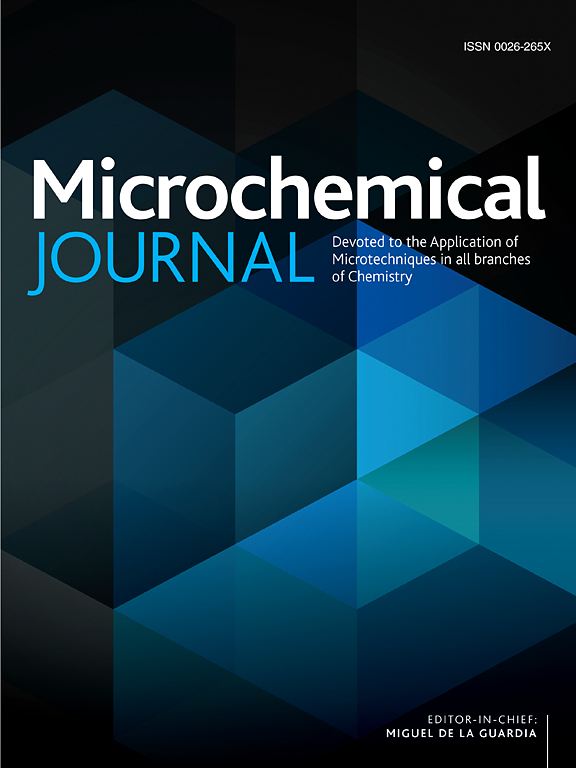Synthesis and application of tungsten oxide nanostructure for ascorbic acid sensing
IF 4.9
2区 化学
Q1 CHEMISTRY, ANALYTICAL
引用次数: 0
Abstract
Engineered nanomaterials that exhibit enzyme-like activity are highly sought after for designing enzymeless sensors, which circumvent the need for costly enzymes. In this context, we synthesized tungsten oxide (WO3) nanostructures via the hydrothermal method and characterized them using various techniques. A slurry of the resulting WO3 nanostructure was prepared and drop-cast onto a screen-printed carbon electrode (SPCE) to construct an enzymeless sensor. The electrochemical characteristics of the WO3/SPCE sensor were evaluated using cyclic voltammetry (CV) and electrochemical impedance spectroscopy (EIS). An optimized WO3/SPCE sensor was electrochemically evaluated for ascorbic acid (AA) detection at varying concentrations employing CV analysis. The CV response exhibited a significant oxidation peak for AA, which gradually intensified with an increment in the AA concentration. The sensor demonstrated a linear response up to 1000 μM, high sensitivity (5.62 μA/μM-cm2), and a detection limit (DL) of 0.6 μM. Moreover, the engineered enzymeless WO3/SPCE sensor displayed excellent selectivity, stability (94.5 % over 6 weeks), and fabrication reproducibility (RSD of 9.2 % across 7 devices). Thus, this WO3 nanostructure proves to be a promising candidate for the large-scale, cost-effective sensor development for AA detection and holds potential for the fabrication of enzyme-based biosensors.

求助全文
约1分钟内获得全文
求助全文
来源期刊

Microchemical Journal
化学-分析化学
CiteScore
8.70
自引率
8.30%
发文量
1131
审稿时长
1.9 months
期刊介绍:
The Microchemical Journal is a peer reviewed journal devoted to all aspects and phases of analytical chemistry and chemical analysis. The Microchemical Journal publishes articles which are at the forefront of modern analytical chemistry and cover innovations in the techniques to the finest possible limits. This includes fundamental aspects, instrumentation, new developments, innovative and novel methods and applications including environmental and clinical field.
Traditional classical analytical methods such as spectrophotometry and titrimetry as well as established instrumentation methods such as flame and graphite furnace atomic absorption spectrometry, gas chromatography, and modified glassy or carbon electrode electrochemical methods will be considered, provided they show significant improvements and novelty compared to the established methods.
 求助内容:
求助内容: 应助结果提醒方式:
应助结果提醒方式:


